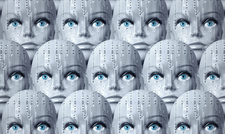Cloning multiple computers with Clonezilla SE
Attack of the Clones

© Lead Image © Csaba Deli, 123RF.com
Managing a network of computers can be an involved process. Clonezilla SE lets you image and roll out multiple machines with ease.
Peace of mind is not measured in gigabytes, but it might as well be, because nothing causes a sys admin more turmoil, pain, and anguish than a dead disk. Clonezilla (see the "What Is Clonezilla?" box) has been coming to the aid of harried sys admins for almost two decades to help them duplicate entire disks, including all the data and partitions, with relative ease.
Clonezilla is a weapon of mass cloning. If your computer empire extends only to a couple of computers, you'll be happy using Clonezilla through its Live environment. On the other hand, if you manage a small school or an office, you should install Clonezilla Server Edition (SE) [2] to clone and restore machines over the network.
To use a cloning solution effectively, it's best if the computers on your network have similar hardware components. If your network is made up of computers with different components, you will need to manage lots of different images.
[...]
Buy this article as PDF
(incl. VAT)
Buy Linux Magazine
Subscribe to our Linux Newsletters
Find Linux and Open Source Jobs
Subscribe to our ADMIN Newsletters
Support Our Work
Linux Magazine content is made possible with support from readers like you. Please consider contributing when you’ve found an article to be beneficial.

News
-
Mozilla Plans to AI-ify Firefox
With a new CEO in control, Mozilla is doubling down on a strategy of trust, all the while leaning into AI.
-
Gnome Says No to AI-Generated Extensions
If you're a developer wanting to create a new Gnome extension, you'd best set aside that AI code generator, because the extension team will have none of that.
-
Parrot OS Switches to KDE Plasma Desktop
Yet another distro is making the move to the KDE Plasma desktop.
-
TUXEDO Announces Gemini 17
TUXEDO Computers has released the fourth generation of its Gemini laptop with plenty of updates.
-
Two New Distros Adopt Enlightenment
MX Moksha and AV Linux 25 join ranks with Bodhi Linux and embrace the Enlightenment desktop.
-
Solus Linux 4.8 Removes Python 2
Solus Linux 4.8 has been released with the latest Linux kernel, updated desktops, and a key removal.
-
Zorin OS 18 Hits over a Million Downloads
If you doubt Linux isn't gaining popularity, you only have to look at Zorin OS's download numbers.
-
TUXEDO Computers Scraps Snapdragon X1E-Based Laptop
Due to issues with a Snapdragon CPU, TUXEDO Computers has cancelled its plans to release a laptop based on this elite hardware.
-
Debian Unleashes Debian Libre Live
Debian Libre Live keeps your machine free of proprietary software.
-
Valve Announces Pending Release of Steam Machine
Shout it to the heavens: Steam Machine, powered by Linux, is set to arrive in 2026.

